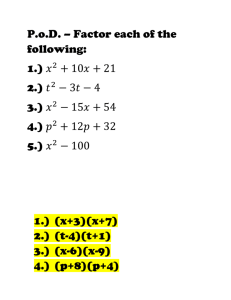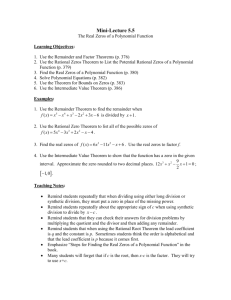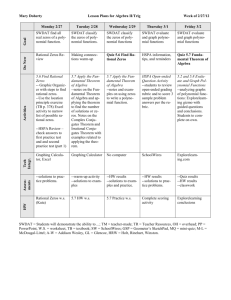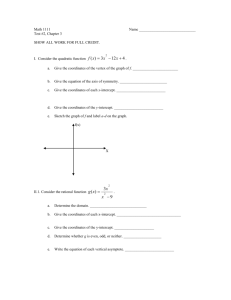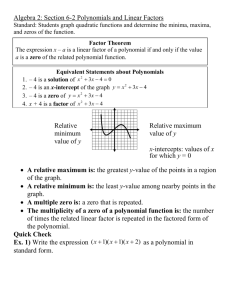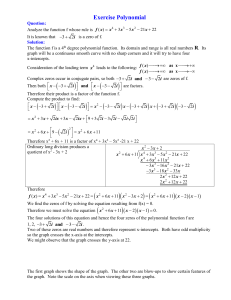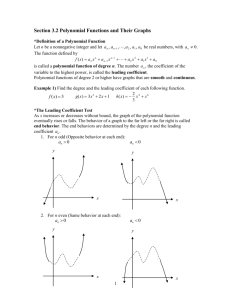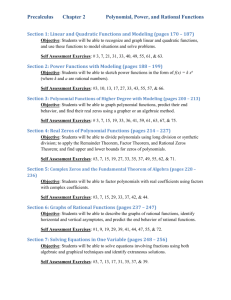File aa u1 day 15 notes polynomials multiplicity
advertisement
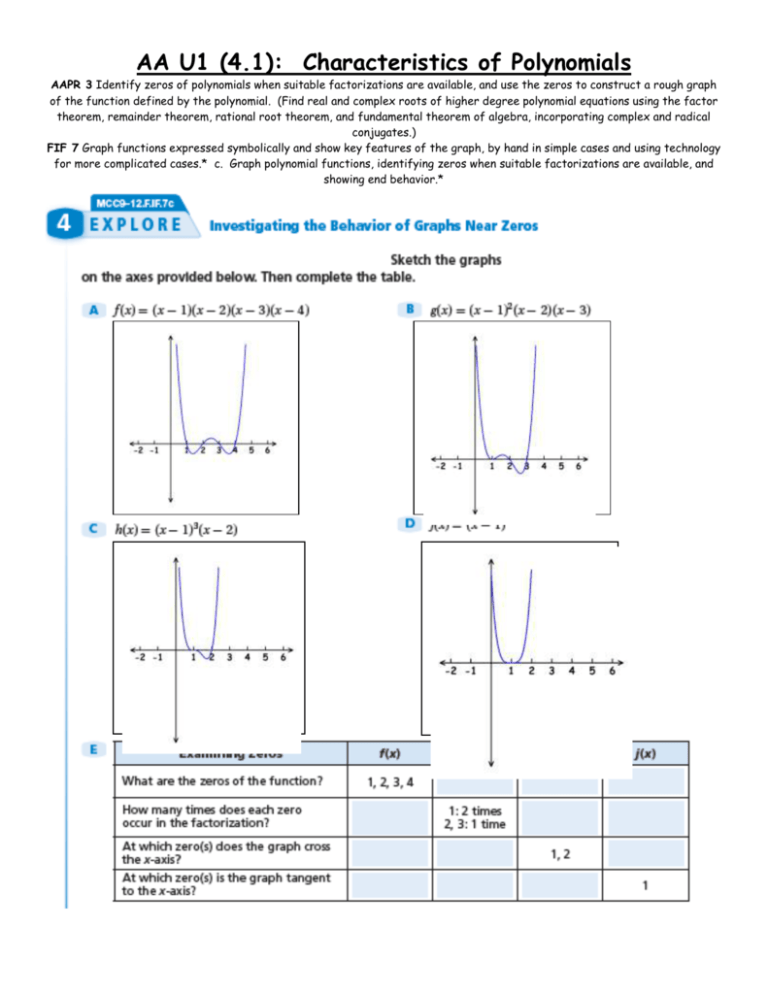
AA U1 (4.1): Characteristics of Polynomials AAPR 3 Identify zeros of polynomials when suitable factorizations are available, and use the zeros to construct a rough graph of the function defined by the polynomial. (Find real and complex roots of higher degree polynomial equations using the factor theorem, remainder theorem, rational root theorem, and fundamental theorem of algebra, incorporating complex and radical conjugates.) FIF 7 Graph functions expressed symbolically and show key features of the graph, by hand in simple cases and using technology for more complicated cases.* c. Graph polynomial functions, identifying zeros when suitable factorizations are available, and showing end behavior.* REFLECT 4a. Based on your results, make a generalization about the number of times a zero occurs in the factorization of a function and whether the graph of the function crosses or is tangent to the x-axis at that zero. The graph crosses the x-axis at the zero if the zero occurs an odd number of times. The graph is tangent to the xaxis at the zero if the zero occurs an even number of times. YOU TRY: Sketch the graph of f (x) = (x-2)2(x +1)(x + 2)(x + 3). The graph shows that f(x) ⟶ -∞ as x ⟶ -∞ and f(x) ⟶ +∞ as x ⟶ +∞, and has x-intercepts -3,-2, -1, and 2, crossing the x-axis at each negative x-intercept and tangent to the x-axis at the positive x-intercept. REFLECT 5a. Can you determine how many times a zero occurs in the factorization of a polynomial function just by looking at the graph of the function? Explain. No; you can tell only whether a zero occurs an even or odd number of times in the factorization. YOU TRY: For the polynomial p(x) = 2x 3 - 7x 2 + 2x + 3, use the Rational Zero Theorem to identify the possible rational zeros; then, factor the polynomial completely, and sketch the function’s graph. Possible zeros: •+1, •+3, •+ 1/2, •+3/2; p(x) = (x - 1)(x - 3)(2x + 1); the graph shows that f(x) → -∞ as x → -∞ and f(x) → +∞ as x → +∞, and has x-intercepts 1, 3, and -1/2, crossing the x-axis at each xintercept. REFLECT 7a. How did you determine where the graph crosses the x-axis and where it is tangent to the x-axis? The graph crosses at any zero that occurs an odd number of times in the factorization (i.e., at x = -3) and is tangent at any zero that occurs an even number of times (i.e., at x = 2). 7b. How did factoring the polynomial help you graph the function? By setting each factor equal to zero and solving, you can identify all the zeros of the function, which are the xintercepts of the function’s graph. 7c. How did using the Rational Zero Theorem to find one zero help you find the other zeros? Using synthetic substitution to find one zero gives the coefficients of the quadratic factor, which can easily be factored into two linear factors.

